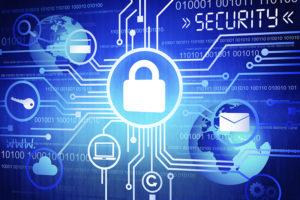Collaborative action of the CIP Coordination Center (ISF-P Action) and SecureGas H2020 project
KEMEA, The Center for Security Studies in Greece, being the national contact point for Critical Infrastructure Protection (according to Directive 2008/114), participates in the European project SecureGas (https://www.securegas-project.eu), which aims to strengthen resilience and security in the EU's Natural Gas networks. As part of the project, methodologies, guidelines and technological solutions aimed at processing information, assessing the risk associated with their natural and cyber threats, at early detection and warning, are being developed, adapted and integrated, with the aim of supporting the decision-making of CI operators and strengthening the resilience of gas infrastructure. The above are developed in the context of three Business Cases, with different needs and characteristics that cover all phases of the gas supply chain. The results of SecureGas will enhance the resilience of the EU's natural gas infrastructure by providing systematic control over the security of the latter, through a platform in the form of a service (Platform as a Service), and through the publication of relevant Directives and good practices.
KEMEA, in the context of utilizing its research activity and its role as a National Contact Point of CIP, implements the interconnection of the pilot CIP Coordination Center developed within the ISF-P Action with the NG infrastructures of the Greek case study (EDAA and DEPA) participating in the SecureGas project. For this purpose, at first level, geospatial information and data for the assets of these infrastructures have been introduced in the Geographic Information Systems platform of the Coordination Center. For some of the elements of the Infrastructures that were introduced, 3D models and orthophoto maps were created (with the help of terrestrial and aerial shots by UAVs), in support of realistic emergency scenarios. The Geographic Information Systems platform of the Coordination Center allows the display and processing of the above products / models in a customized mapping environment, and in combination with other relevant geographic layers of thematic data.
Meanwhile, following physical and online meetings and exchanges, the interconnection / interoperability of the INCIDENT REPORTING (IR) application of the Coordination Center was agreed with the developing tool of SecureGas (RISK AWARE INFORMATION TO THE POPULATION). The latter regards the assessment and communication of information upon incidents risk to the competent crisis management bodies, through which information is provided to the operators of other infrastructures and to the population. The IR application of the Coordination Center has been adapted to meet the requirements of SecureGas infrastructures, in order to function as a hub for the transmission of information related to critical events in NG infrastructures, from the operators of the latter to Emergency response Services and Authorities (e.g. Police, Fire Brigade, etc.).
In addition, the team of the Coordination Center is in collaboration with the technical partners and the Greek managers of SecureGas infrastructures, in order to create and integrate in the Knowledge Base of the RISK application of the Coordination Center, empirical knowledge rules for risk assessment of NG infrastructures.
The cooperation and synergy between the two projects is expected to significantly improve the scientific results and their technical deliverables and to establish a methodological and technological basis for relevant future actions also in other sectors of critical infrastructures.
The abovementioned possibilities were presented during an online seminar on security issues and projects organized by KEMEA for the research associates of the Center and was attended by fifty researchers.






